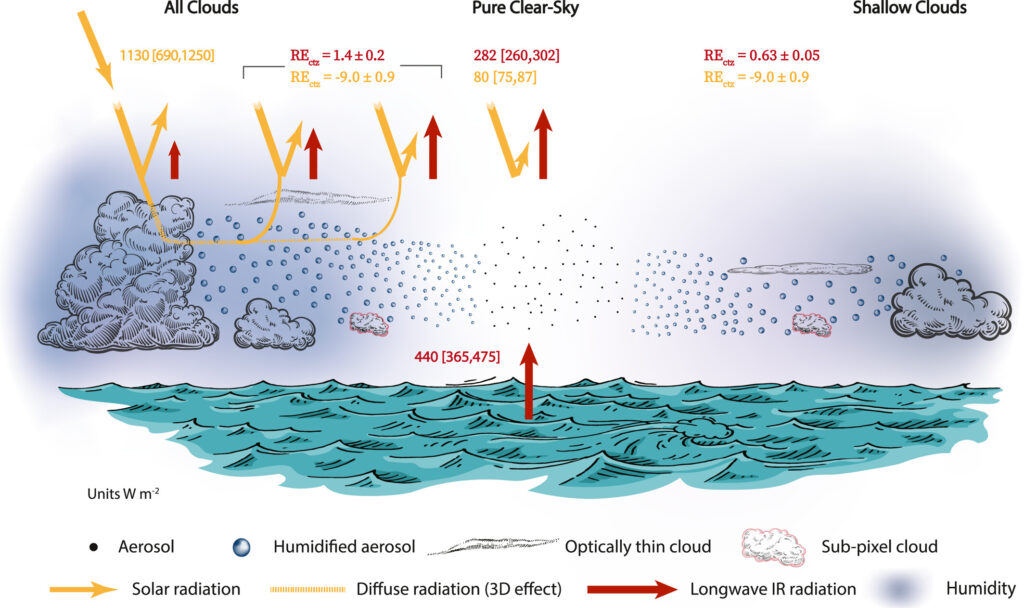Editors’ Highlights are summaries of recent papers by AGU’s journal editors.
Source: AGU Advances
Estimates of cloud impacts on Earth’s radiative budget mostly rely on characterizing short- and long-wave differences between ‘cloud’ versus ‘clear-sky’ regions. However, large regions of the sky are in zones of transition near clouds, where optically thin or subpixel sized clouds remain undetected but affect radiative balance in ways that differ from clear-sky conditions distant from any cloud.
Eytan et al. [2025] present a method to resolve differences in spatial resolution between satellite (MODIS) measures of spectral reflectance (1 kilometer pixel) with top-of-atmosphere energy balance (CERES, 20 kilometers) to estimate net short- and longwave radiative effect of clouds, near-cloud regions, and clear sky more than 15 kilometers from a detected cloud. They apply this over the Pacific and Atlantic oceans for 2 years to estimate the net radiative effects of cloud, near-cloud and clear sky regions.
The authors find that near-cloud regions reduced solar radiation by about 2.5 W/m2 compared to the ‘clear sky’ direct aerosol effect in the same region. These results clarify the importance of including near-cloud effects for the Earth’s energy budget and for removing biases when quantifying direct aerosol effects in non-cloud regions.

Citation: Eytan, E., Gristey, J. J., & Feingold, G. (2025). The net radiative effect of the Ill-Defined clear-Sky in the vicinity of clouds. AGU Advances, 6, e2024AV001407. https://doi.org/10.1029/2024AV001407
—Susan Trumbore, Editor, AGU Advances

